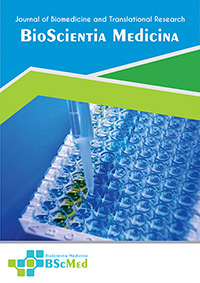Main Article Content
Abstract
Background: Discoid lupus erythematosus (DLE), the most common form of chronic cutaneous lupus, exhibits significant clinical variability influenced by ethnicity. While disparities in presentation are recognized, data from unique indigenous populations such as the Papuanese in East Indonesia remain scarce. This study aimed to characterize the clinical and sociodemographic features of DLE in this specific cohort to identify its potentially distinctive phenotype.
Methods: A five-year retrospective analysis of clinical databases was conducted at the Department of Dermatology and Venereology at a tertiary referral hospital in Jayapura, Papua, Indonesia. All patients clinically diagnosed with DLE by board-certified dermatovenereologists between January 2019 and December 2023 were included. Sociodemographic and clinical data, including lesion morphology, location, and management, were systematically collected and analyzed using descriptive statistics.
Results: A total of 22 patients meeting the criteria were identified. The cohort demonstrated remarkable homogeneity; all patients were of Papuanese ethnicity and female (100.0%). The majority were in the 26-35 age group (40.9%), with a mean age of 29.4 years, and half were farmers (50.0%). Clinically, lesions were universally present on the nose and/or malar area (100.0%). The most common morphological triad was dyspigmentation, scarring, and telangiectasia, observed in 81.8% of patients. All patients reported photosensitivity and were managed with photoprotection and topical steroids.
Conclusion: DLE I n Papuanese women presents as a distinctive, highly uniform clinical phenotype characterized by an exclusive female predilection, a strong association with sun exposure, and a universal malar distribution with a high propensity for disfiguring dyspigmentation and scarring. These findings underscore the necessity of culturally competent, early, and aggressive management strategies to mitigate long-term sequelae in this vulnerable population.
Keywords
Article Details
As our aim is to disseminate original research article, hence the publishing right is a necessary one. The publishing right is needed in order to reach the agreement between the author and publisher. As the journal is fully open access, the authors will sign an exclusive license agreement.
The authors have the right to:
- Share their article in the same ways permitted to third parties under the relevant user license.
- Retain copyright, patent, trademark and other intellectual property rights including research data.
- Proper attribution and credit for the published work.
For the open access article, the publisher is granted to the following right.
- The non-exclusive right to publish the article and grant right to others.
- For the published article, the publisher applied for the Creative Commons Attribution-NonCommercial-ShareAlike 4.0 International License.





